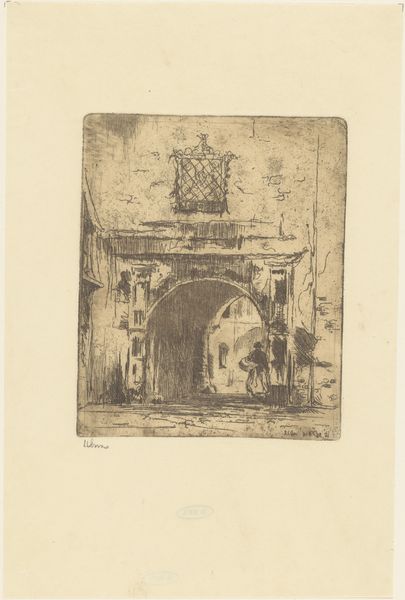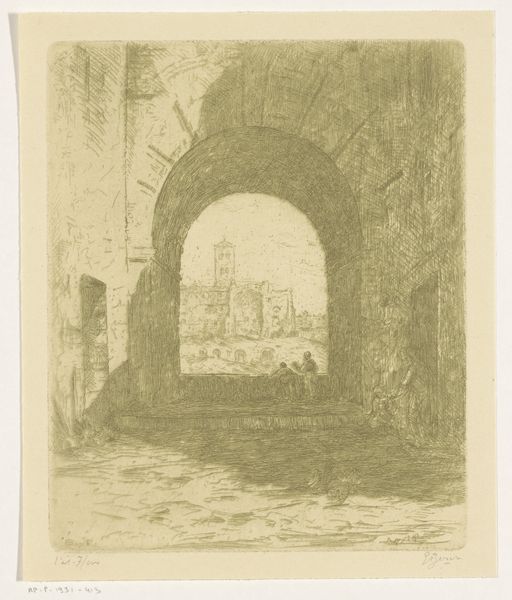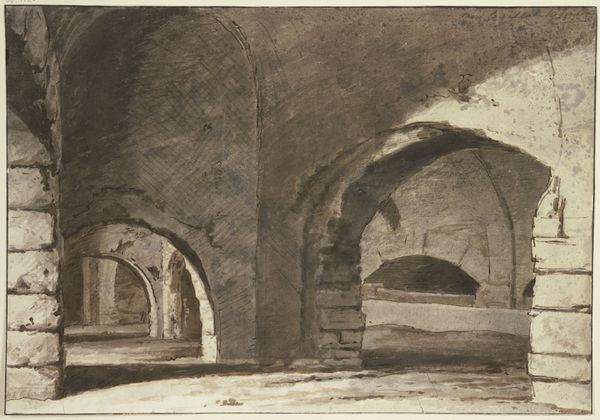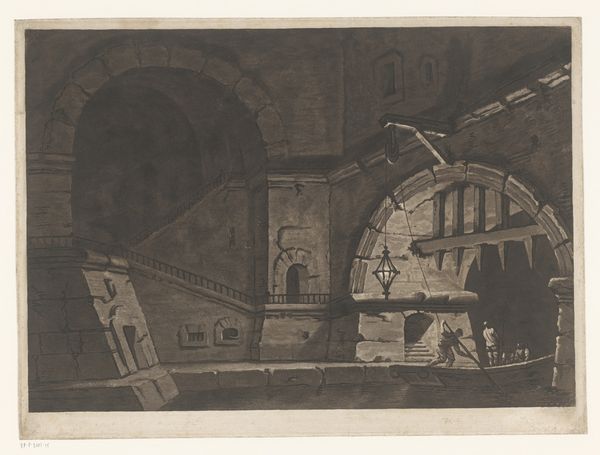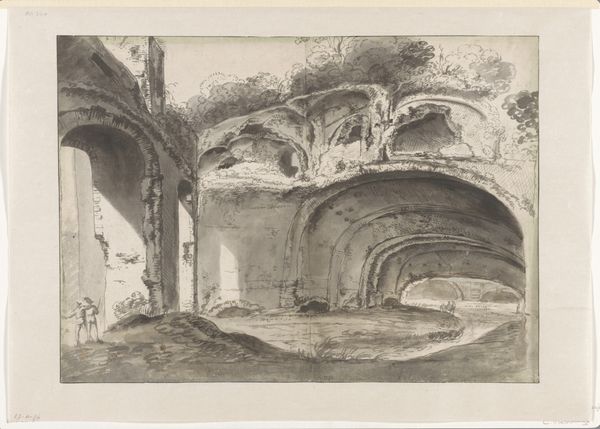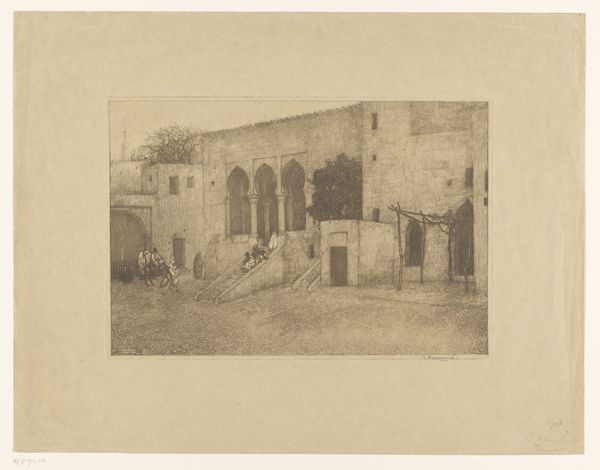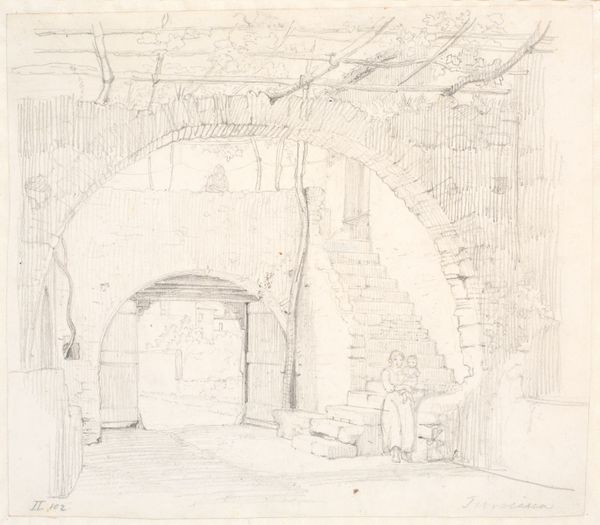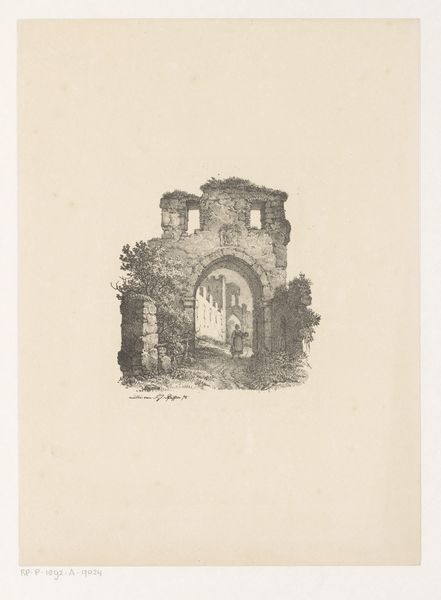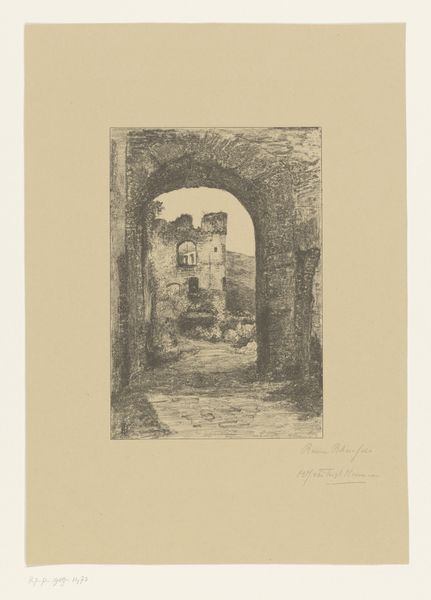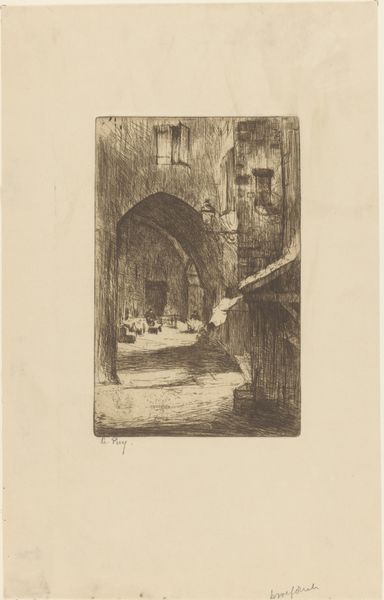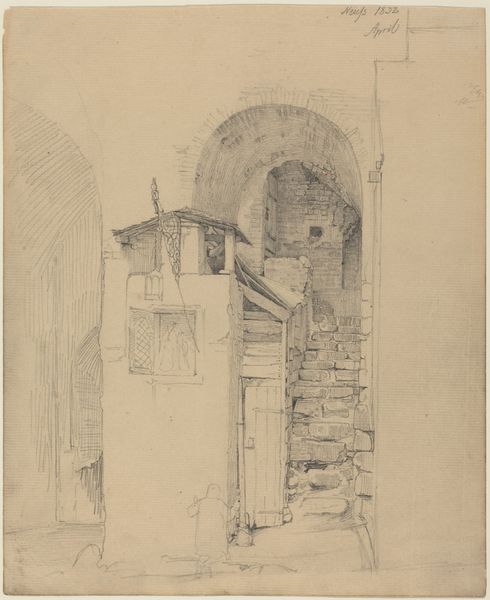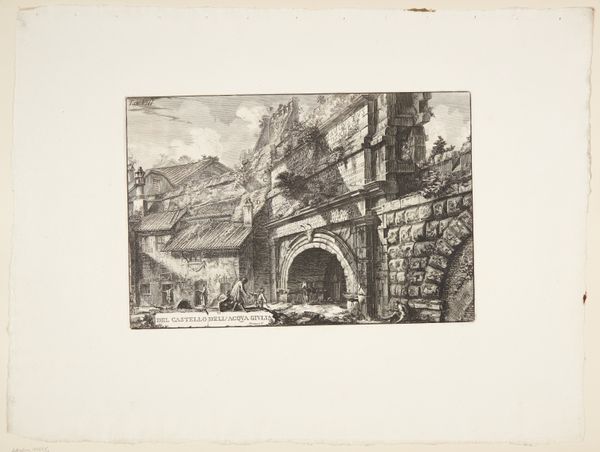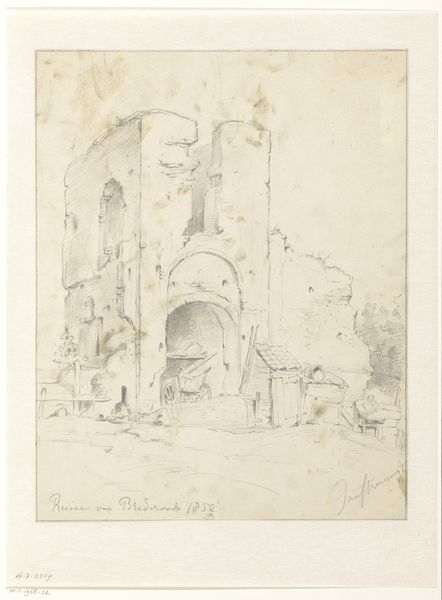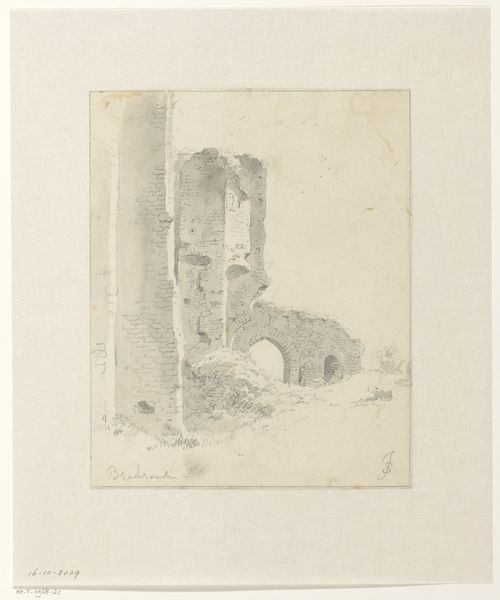
drawing, etching, paper, pencil
#
drawing
#
baroque
#
etching
#
pencil sketch
#
landscape
#
etching
#
paper
#
pencil
#
genre-painting
Dimensions: height 302 mm, width 405 mm
Copyright: Rijks Museum: Open Domain
Curator: Welcome! Today, we're observing Pieter Bodding van Laer's "Interieur met poort en trap," a captivating etching likely crafted between 1592 and 1642. Editor: My first thought is how starkly beautiful it is in its dilapidation. There is an overwhelming sense of abandonment within its geometry. Curator: Indeed. Look at how van Laer orchestrates the scene with a focus on line and form. Notice the crumbling arches, the rough-hewn wooden beams of the ceiling, and the composition's reliance on diagonals and rectangles. It is about revealing structure itself. Editor: Absolutely, but these are not just formal devices! Consider what that degradation signifies. Are we seeing the literal decay of infrastructure, perhaps reflecting broader social neglect? The work really speaks to the ephemerality of power structures and institutions. What stories do these ruins have to tell us? Curator: That reading certainly resonates. Yet I find myself returning to the internal logic of the piece. The light, carefully modulated, serves to accentuate the geometric clarity of each form, thereby harmonizing a potentially chaotic space into a comprehensible aesthetic unit. Editor: Perhaps, but is there not a dissonance, an intentional counterpointing between geometric control and material decay? We could argue that this piece offers commentary on how power imposes order onto marginalized communities even in phases of destruction or historical obsolescence. Whose history is recorded and whose is erased by processes like these? Curator: Interesting point. And although van Laer's medium of etching creates linear precision, his pencil strokes bring a needed humanity to stone. The very mark-making breathes character. Editor: Yes! Etching is such an interesting medium to capture, and preserve the precarious conditions of the depicted infrastructure. Consider, also, who historically had the privilege to record ruins—was it those whose class and status protected them from ruin themselves? Curator: Certainly food for thought, regarding medium as message. Both the artist and medium, by consequence, bring their own history into the artwork. Thank you for opening these ideas to our consideration. Editor: And thank you for drawing attention to the rich dialogue created through contrasting shapes and tonality in "Interieur met poort en trap." I hope visitors feel compelled to contemplate their own relationship to spaces and the narratives of decay as they continue through our collection.
Comments
No comments
Be the first to comment and join the conversation on the ultimate creative platform.
